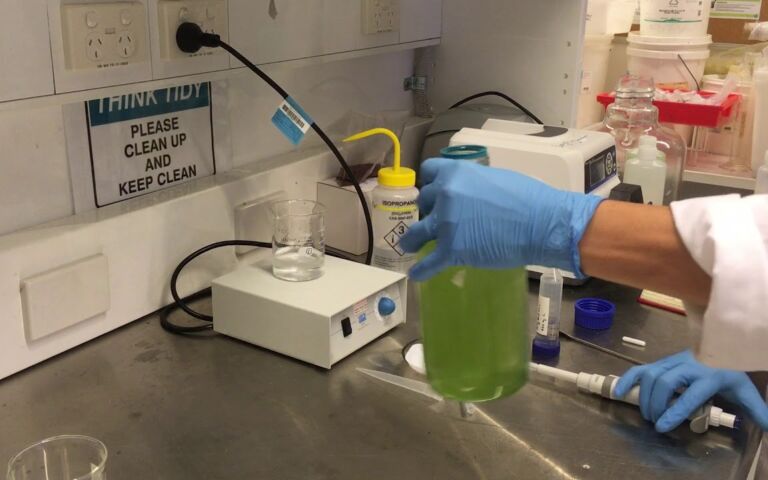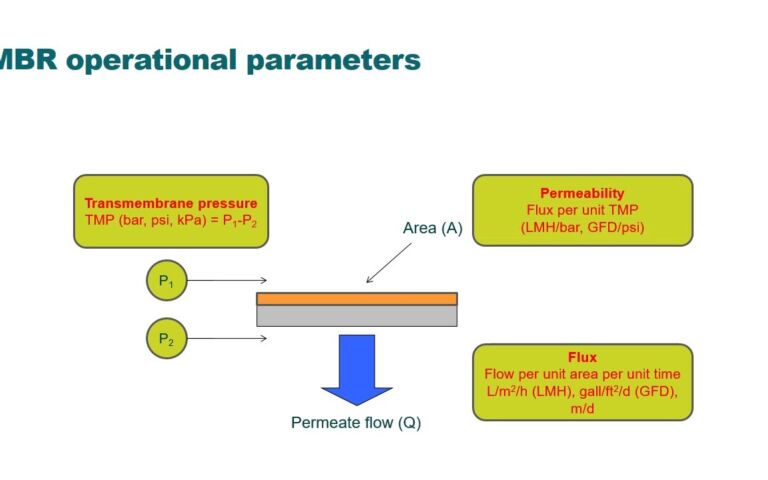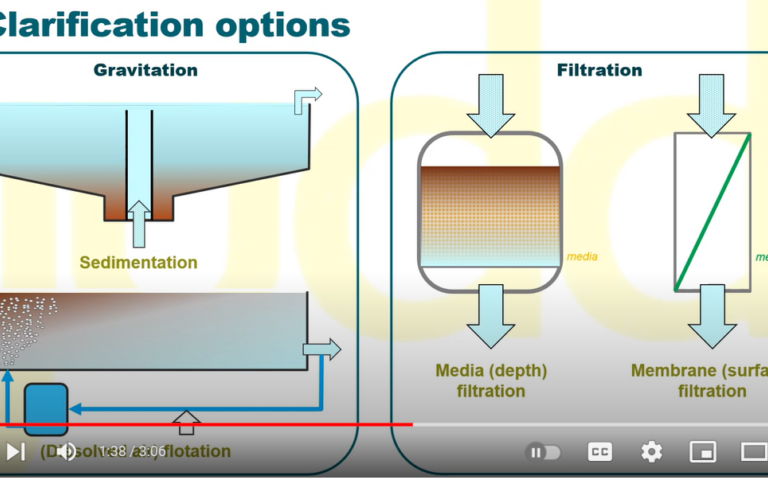Classical wastewater treatment: conventional activated sludge process

MBRs and CAS
A membrane bioreactor is an adaptation of the conventional or classical activated sludge (CAS) process. The CAS process comprises a biological tank, in which aerobic treatment takes place to bio-degrade the organic carbon and amino compounds, followed by a sedimentation tank (secondary clarifier).
The sedimentation tank, or 'secondary clarifier', separates the solids from the liquid to allow the clarified liquid to be discharged or go on for further 'tertiary' treatment (such as filtration and/or UV disinfection). The retained sludge solids in the secondary clarifier are mostly returned (the 'return activated sludge' or RAS stream) to the biological tank. A small portion of this stream (the 'waste activated sludge' or WAS) is wasted to retain the overall solids concentration in the biological tank at a set value.
The solids concentration in the biological tank is normally referred to as the “mixed liquor suspended solids” or MLSS. The maximum MLSS concentration in a CAS process is determined both by the concentration of the organic matter in the feed and the settleability of the solids in the secondary clarifier, and is usually 2-4 times less than that for an MBR.
The CAS process is normally configured to allow the removal of nitrate according to the ‘Modified Ludzack-Ettinger’ (MLE) process.

Classical sewage treatment proceeds via the screening of gross solids (possibly combined with grit removal), followed by sedimentation of settleable solids upstream of the biological process. The first sedimentation tank, which removes large settleable solids from the raw sewage, is referred to as the primary clarifier or primary sedimentation.
The biological process normally includes recycling the nitrate-rich sludge from the secondary clarifier to some point upstream of the aerobic process where anoxic conditions then prevail, which achieves nitrate removal. Various configurations that include a preliminary anaerobic zone to assist biological phosphorus removal (BPR) are also available.
Aerobic wastewater treatment with classical activated sludge
Aerobic MBRs can be configured similarly to these modified CAS processes, in essence, the biological function remains unaltered by the membrane: the membrane simply replaces the secondary clarifier.
Municipal MBRs are often implemented as a retrofit to an existing CAS process. Adapting the CAS to an MBR permits an increased flow through the process as well as an improved treated water quality, which is often of practical significance when consents/permits for discharged nutrients in the wastewater are tightened by the regulators.







